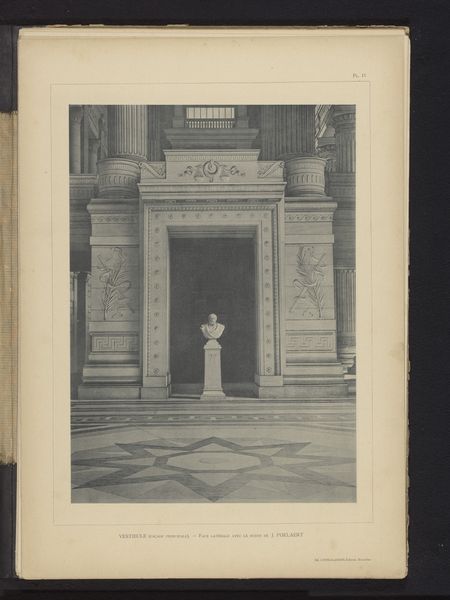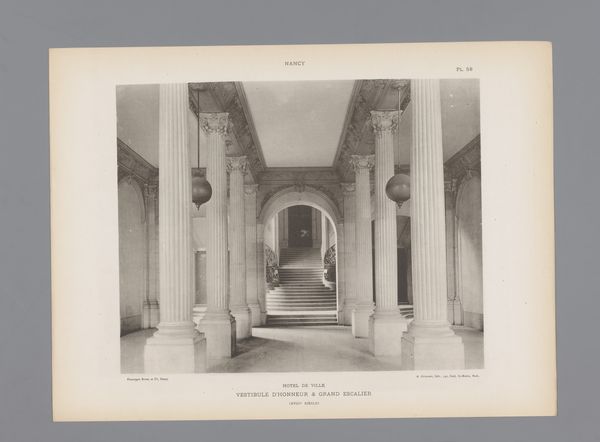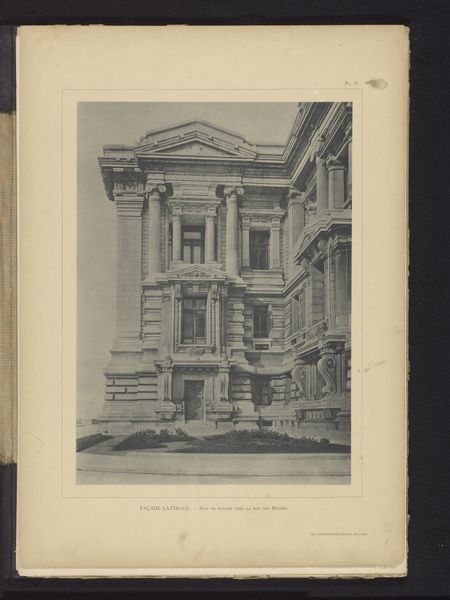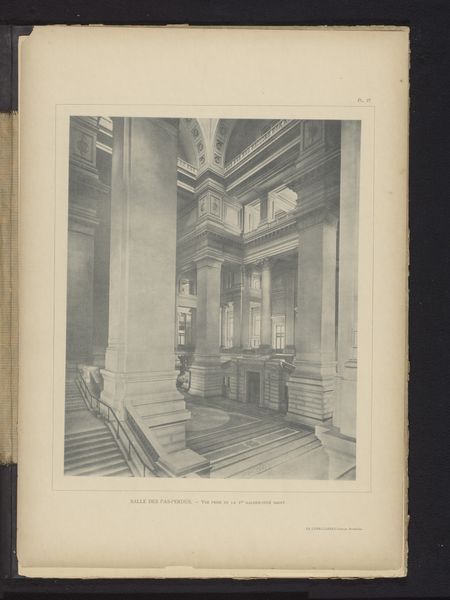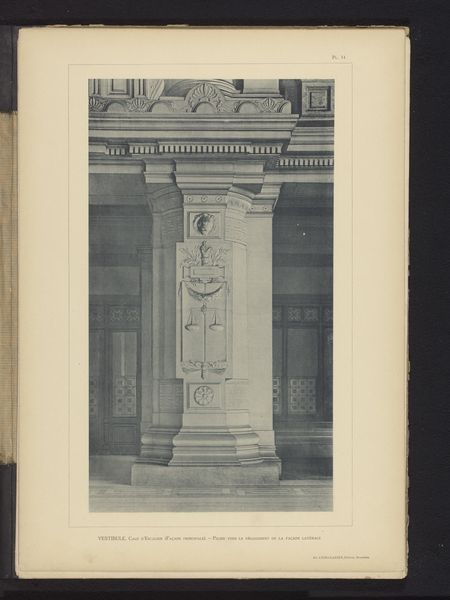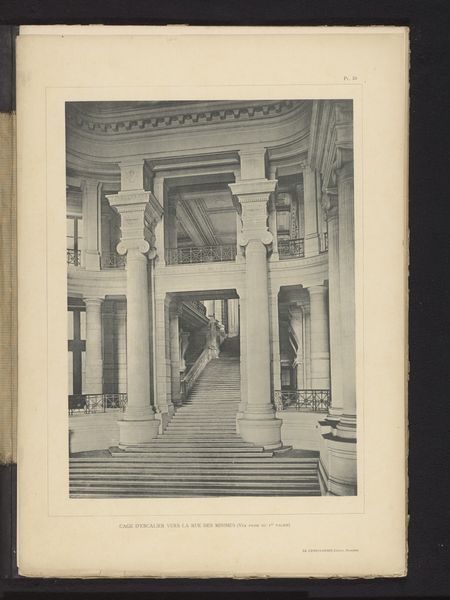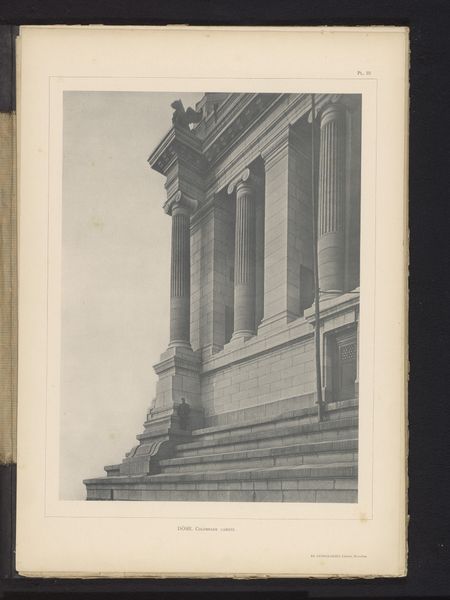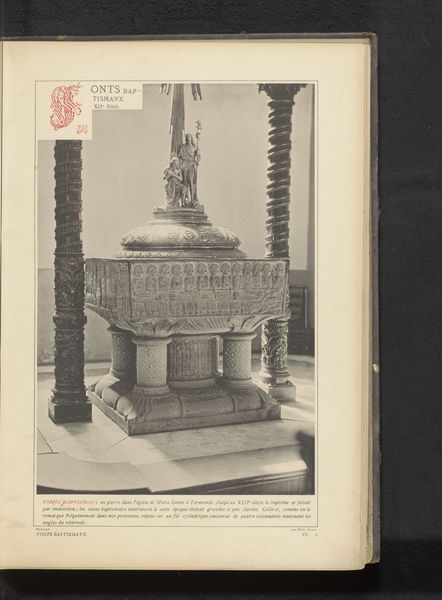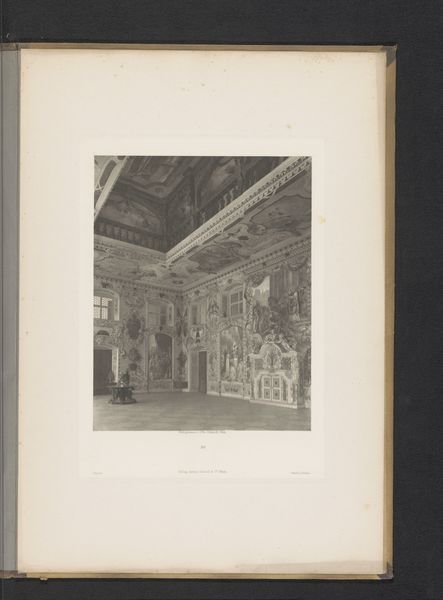
Grote trap aan de voorzijde van het Paleis van Justitie in Brussel, België, gezien vanuit een zuilengalerij before 1894
0:00
0:00
Dimensions: height 310 mm, width 228 mm
Copyright: Rijks Museum: Open Domain
Curator: Here we have an engraving titled, “Grote trap aan de voorzijde van het Paleis van Justitie in Brussel, België, gezien vanuit een zuilengalerij,” or “Grand Staircase at the front of the Palace of Justice in Brussels, Belgium, seen from a colonnade.” The anonymous artist created this image sometime before 1894. Editor: Immediately, I’m struck by the overwhelming sense of order and hierarchy rendered with incredible detail. The interplay of light and shadow emphasizes the grand scale. Curator: It's interesting to observe the play between realism and formalism here. Notice the artist's rigorous commitment to capturing architectural detail, true to the principles of Realism and Academic Art, which prioritize a naturalistic depiction. At the same time, observe how the very calculated arrangement of forms serves a formalist agenda, creating rhythm, balance, and ultimately… power. Editor: Indeed. And looking through the lens of socio-political history, the Palace of Justice, depicted here so meticulously, represents more than just architectural achievement. Built in the late 19th century, it’s a symbol of burgeoning legal authority during a time of immense social change in Belgium. It literally looms over the city. Curator: I find the strategic deployment of line to be equally compelling, it produces visual harmony in every measured interval. The receding columns aren't merely illustrative. Rather they’re a demonstration of the way perspectival geometry determines a viewing experience. The engraving isn't simply depicting the palace, it’s staging a symbolic confrontation between the viewer and institutional power. Editor: Precisely, and the choice to feature a grand staircase – rendered impeccably through the colonnade – speaks volumes. Consider that in a time of stark social inequalities, the building practically flaunts its magnitude. Its Neoclassical features are deliberately reminiscent of ancient Roman civic buildings, thus making very clear symbolic references to law, order, and enduring empire. Curator: Absolutely. What began as a rather representational urban landscape becomes an exercise in the strategic organization of form. An almost clinical dissection of a very grand setting. Editor: It leaves you wondering how someone on the street would perceive a place like this, if they are not ever allowed or do not feel welcome to enter. A complicated statement of permanence and civic promise.
Comments
No comments
Be the first to comment and join the conversation on the ultimate creative platform.

